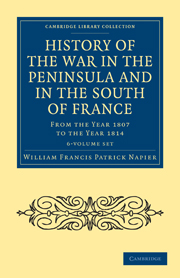 Up till now, I have never read anything by Stendhal, in English translation, never mind in French. He is apparently regarded as one of the earliest ‘realist’ novelists, but having read the plot summaries of Le Rouge et le noir and La Chartreuse de Parme, all I can say is that it is clear that literary critics do not use the word ‘realist’ in the same sense as us ordinary folks.
Up till now, I have never read anything by Stendhal, in English translation, never mind in French. He is apparently regarded as one of the earliest ‘realist’ novelists, but having read the plot summaries of Le Rouge et le noir and La Chartreuse de Parme, all I can say is that it is clear that literary critics do not use the word ‘realist’ in the same sense as us ordinary folks.
And it is not necessarily the case that I have been reading Stendhal (in English translation) now. The two volumes on composers which we have just reissued, and which were originally published in French in 1814 and 1824, have on their respective title pages the name ‘Louis-Alexandre-César Bombet’ and ‘by the author of’ the previous book.
‘Bombet’ was one of the various pseudonyms (of which ‘Stendhal’ is by far the best known) of Marie-Henri Beyle (1783–1842). But there are two further problems. Both books in their original French versions were believed at the time to have been plagiarised from Italian originals; and both have clearly been edited or otherwise transmogrified by their translator(s) into English. And (naturally) the translator of the first book prefers remain anonymous, while the helpful notes on musical points are by ‘The Author of the Sacred Melodies’; and the second mentions neither the author nor the translator on the title page.
The thing about Henri Beyle is that for a modern reader (or this one at any rate) his life is so much more interesting than his fiction. There’s the question of how he survived the first two decades of the nineteenth century, as he dodged between France, Italy and Russia, and from love affair to love affair, and from one temporary job to another. He decided to write a book about the history of Italian painting, but lost the manuscript on the Retreat from Moscow (he was in some vague sense an officer in the French army throughout this period), and so rewrote it. (This may not have been too much of an effort, as he was using a well-known Italian book as his ‘template’.) Most of his novels were neither critical nor popular successes in his own lifetime, though Balzac especially seems to have been heavily influenced by him.
But back to his music biographies, plagiarized or not. The first, The Life of Haydn, in a Series of Letters Written at Vienna: Followed by the Life of Mozart, with Observations on Metastasio, and on the Present State of Music in France and Italy was published in English in 1817. The translation was in fact by one Robert Brewin, and ‘The Author of the Sacred Melodies’ turns out to be the composer and musicologist William Gardiner. The book, in epistolary form, begins with an overview of music in Italy and Germany up to the time of Haydn, and continues with the now familiar anecdotes of his humble origins, his time as a choirboy at St Stephen’s, Vienna, and his early struggles until taken into the household of the Esterhazy family.
All interesting and plausible, for me at any rate, until the author says that he himself was present at the first performance of The Creation. Since this took place in April 1798, when Beyle was fifteen and living at home near Grenoble, my confidence in the ‘authority’ of the ‘author’ took a bit of a tumble… But as the professional musicologist who wrote the blurb for us observes, ‘His lives of Haydn and Mozart were substantially derived from works by Giuseppe Carpani and Théophile Winckler respectively. Despite this audacious plagiarism, Stendhal’s passion for music is evident’ – and it is impossible to disagree with this.
The biography of Mozart is similarly anecdote-strewn, but also strewn with fascinating critical judgments. Mozart is not as good a symphonist as Haydn, La Clemenza di Tito is his greatest opera, and, bizarrely, Mozart is the most melancholy of composers. There is a strange passage where various contemporary composers are paired with the Old Masters with whose style their work seems to have most in common. Haydn gets Tintoretto (OK), and Handel Michelangelo, but Mozart is left with Domenichino, a painter not at all to my taste (and Ruskin didn’t like him either), who, ironically, was accused by a rival of plagiarism. And, conversely, Titian is paired with Piccini – duh?
The volume ends with a short eulogy of the works of Metastasio, whose libretti were used and reused by the myriad opera composers of eighteenth-century Italy. The celebrity of Metastasio (Dr Burney wrote a three-volume ‘Life’ of him) seems odd today, but at the time, operas were ‘written by Metastasio, with music by X or Y’, the composer being a sort of afterthought. (Indeed, La Clemenza di Tito was a libretto by Metastasio which had been set by more than a dozen composers – Gluck is the best remembered today – before Mozart used an adaptation of it.)
Anyway, back to Stendhal’s second musical book: Memoirs of Rossini, published in English translation in 1824 (when its subject was only 32 and had another 44 years to live). For this work, he seems to have plagiarised Carpani again, but again the vigour and enthusiasm with which he expresses his opinions (some of them self-contradictory) carry us along with him, and it is very interesting to read about the performance and reception of some of the early works which are now hardly staged at all. There is a fascinating account of the first performance of Il barbiere di Siviglia in Rome in 1816, where devoted followers of Paisiello, who had previously set the work, formed a claque to hiss the upstart off the stage. (Out of a sense of duty to my public, I have listened on YouTube to some bits of Paisiello’s Barber, and can report that it goes ‘plonk, plonk, plonk’.)
However, in the English version, the translator points out that ‘some liberties have been taken with the Author’s text, relative to certain points of a religious, political, and local nature’ – in other words, the book has been cut – without revealing where, or how much. The French original was a two-volume work, and a quick comparison with the online version of this shows many cuts and a great deal of reorganization, some of which is understandable (for example, the French Rossini repeats quite large chuck of the Mozart ‘life’ by way of musical context). Other things which were jettisoned include ‘Ode italienne sur la mort de Napoléon, à comparer à l’ode anglaise de lord Byron, et à la méditation de M. de Lamartine sur le même sujet’, for which I suspect we may be grateful.
All in all, these books are a puzzle – why did Henri Beyle write them? (For money, says the cynic.) Why did he write them in such a way that the plagiarism was very soon apparent? Were the translators aware of the plagiarism? What dictated the Rossini translator’s cuts and rearrangements (which he assumed would be recognized by those ‘acquainted with the original’)? Why all the coyness about real names? A post-modern novel could hardly have more fun with the concept of the ‘auteur’!
The redeeming feature is the gusto with which Stendhal treats his subject. He cheerfully assumes that the reader is a fellow enthusiast, who will have no problem recognising which opera ‘Là ci darem’ or ‘Non più andrai’ is from. His sweeping judgments are fascinating – ‘Rossini seems expressly constituted to throw into extacies [sic] persons of moderate powers and second-rate talents’; ‘if the music of Rossini is never heavy, it is of a kind to weary by long repetition’. And perhaps most interesting of all are his comments on the composers of the previous generation: Galuppi, Pergolesi, Vinci, Hasse, Jomelli, Guglielmi, Piccini, Sarti, etc. With the exception of a very few individual works, these men are never performed these days. What are we missing? In particular, Cimarosa is mentioned time and time again as the perfect composer. Was he so good – and was it Beyle/Bombet/Stendhal who thought so, or Carpani or Winckler, or Brewin or Gardiner?
Caroline



Stendhal’s views on music don’t seem worth the trouble to disinter but I do recommend the two great novels. You can’t judge a novel by its plot summary.
Thanks Stephen – which should I start with?
PS, I should have added, it will definitely have to be in English!
“Scarlet and Black” and “The Chaterhouse of Parma”. I recently read W.G. Sebald’s “Vertigo” which has a chapter on Stendhal which serves as an oblique sort of overview of his life and main artistic concerns.
Thanks for this: I couldn’t remember where Sebald had written about Stendhal – thought it was in ‘The Rings of Saturn’, but that’s Chateaubriand.
I was just at Horncastle, where I found the Penguin ‘Charterhouse’ for 50p in a second-hand bookshop – it seemed like a sign!